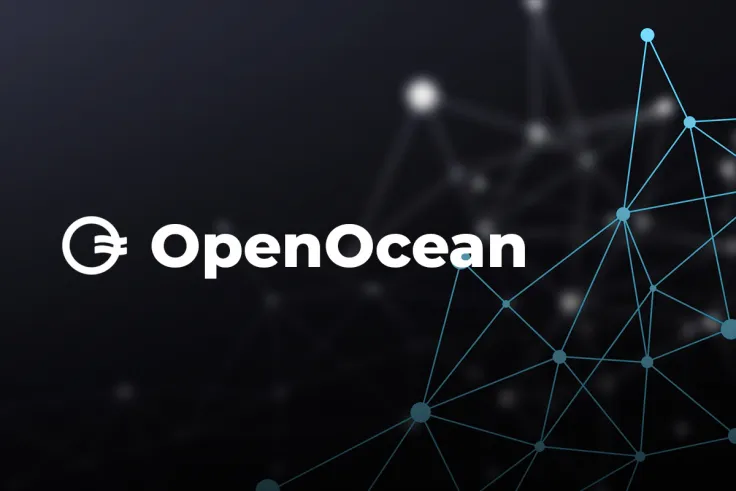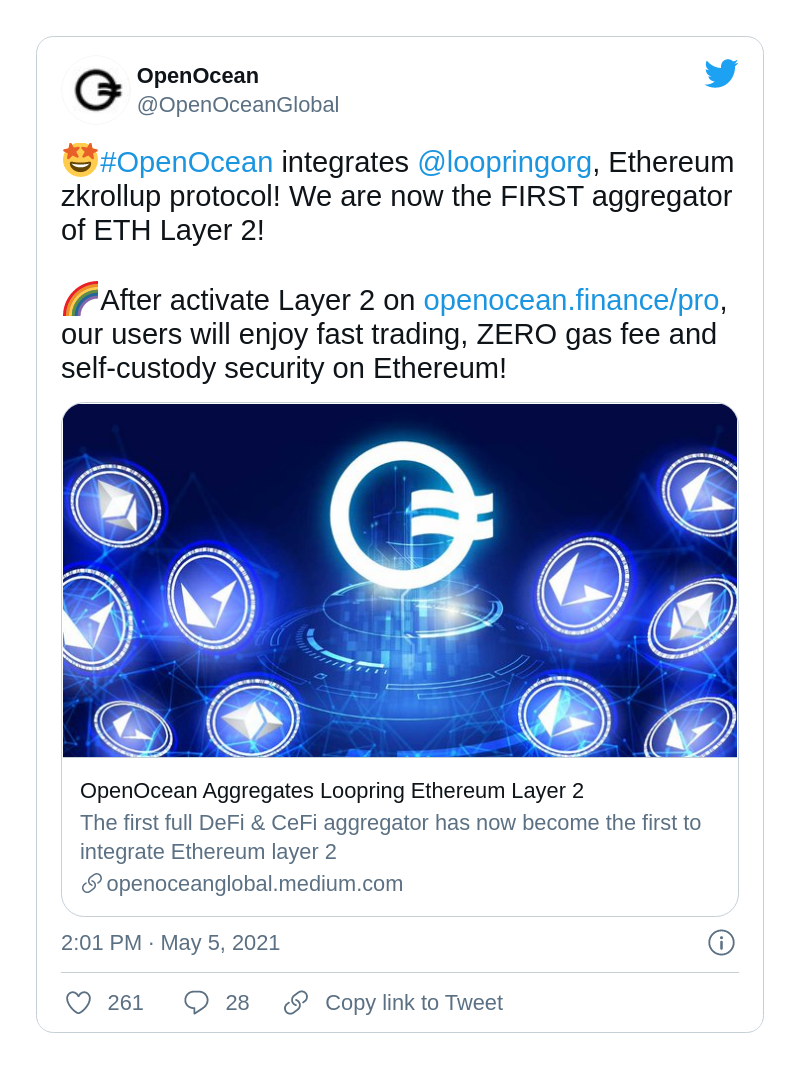
OpenOcean, tasked with merging liquidity across cenralized and decentralized financial protocols, becomes the first-ever liquidity dashboard to integrate Loopring (LRC).
Low fees, advanced speed, Ethereum-level security: OpenOcean integrates Loopring
CeFi/DeFi aggregator OpenOcean has successfully integrated the mechanisms of many blockchains, including Ethereum, Binance Smart Chain, Ontology and Tron. Now, its team has added Ethereum's Layer 2 protocol, Loopring, to its technology stack.

Fee reduction and order execution speed upgrades are the two main rationales behind the integration of Ethereum's Layer 2. Also, it is desgined to prevent OpenOcean from congestion in periods of maximum Ethereum (ETH) overload.
Loopring was chosen by the OpenOcean team due to its proven reliability and cost-efficient design. Loopring utilizes the concept of zkRollups, which is suitable for the majority of DEXs and AMMs.
Loopring integration allows OpenOcean to implement a new fee scheme. Now, the liquidity taker is charged with 0.25 percent fees while the maker is charged with negative fees. Actually, he/she is rewarded for bringing money to the protocol.
More integrations to come
To interact natively with Ethereum's Layer 2, OpenOcean traders should activate specific accounts. Once the accounts are activated, the Layer 2 pairs will be displayed in orderbooks with special labels.
Ethereum's (ETH) mainnet and Ethereum's Layer 2 interact via a decentralized bridge, while their users are charged with negligible gas fees only.
The OpenOcean team highlights that more blockchains will be integrated by the aggregator in the coming months. Solana (SOL), Polygon Network (ex-Matic) and Polkadot (DOT) are top candidates for the integration.
 Dan Burgin
Dan Burgin Vladislav Sopov
Vladislav Sopov U.Today Editorial Team
U.Today Editorial Team